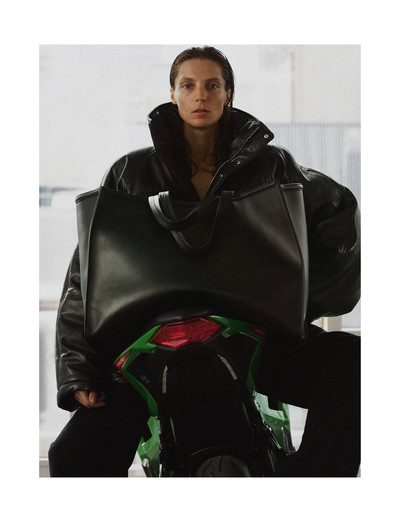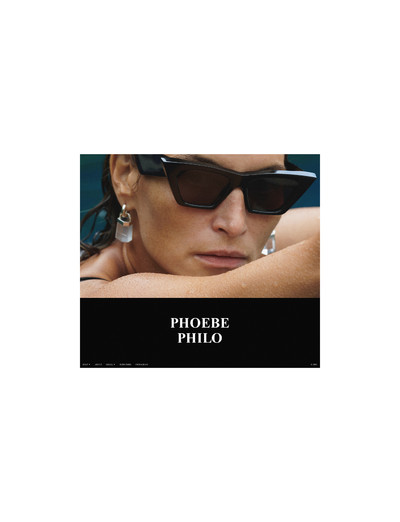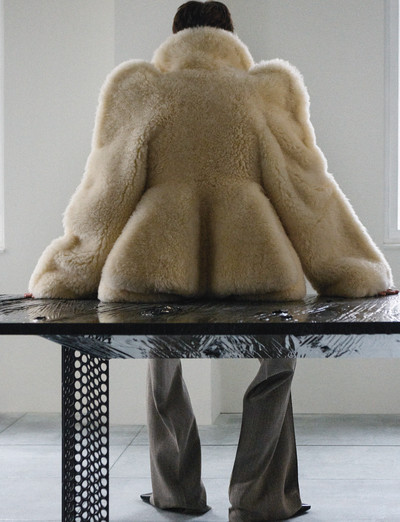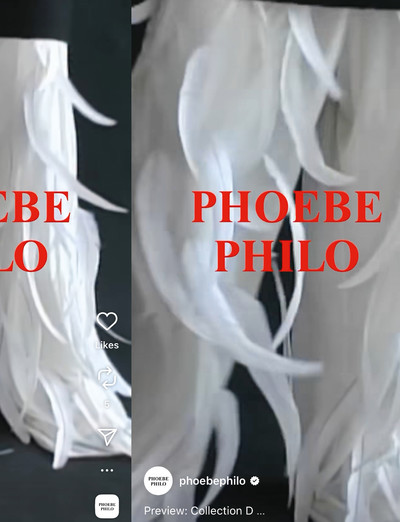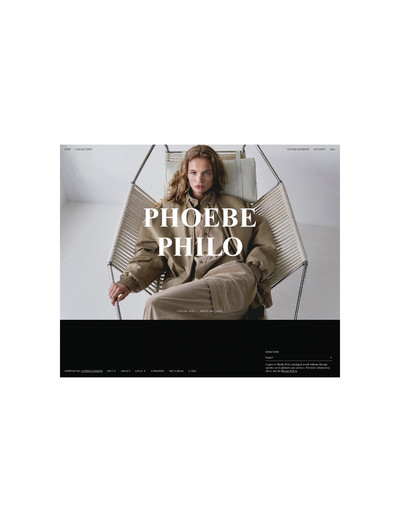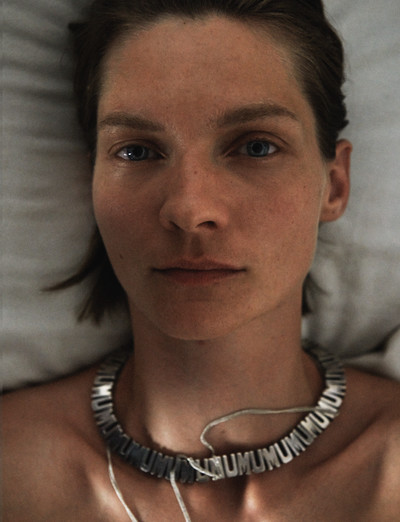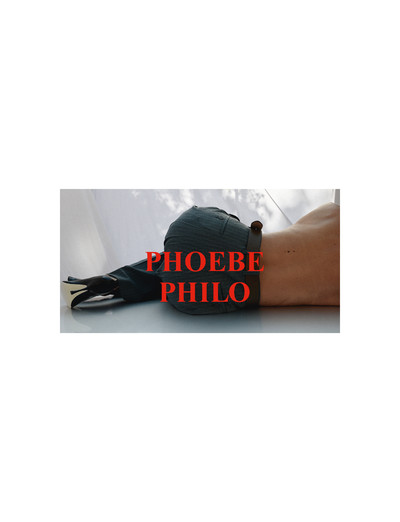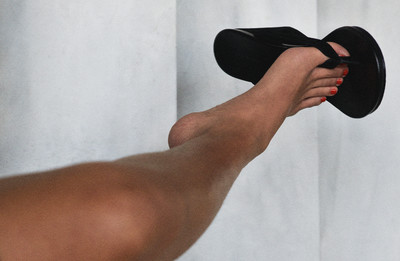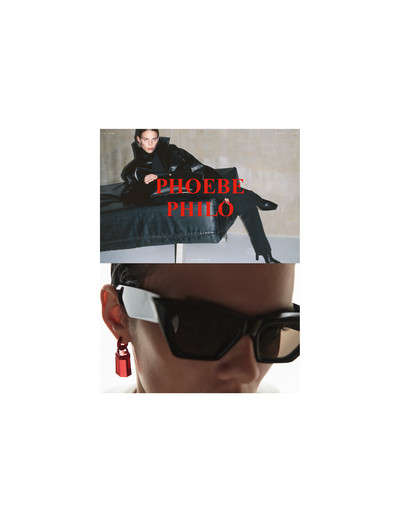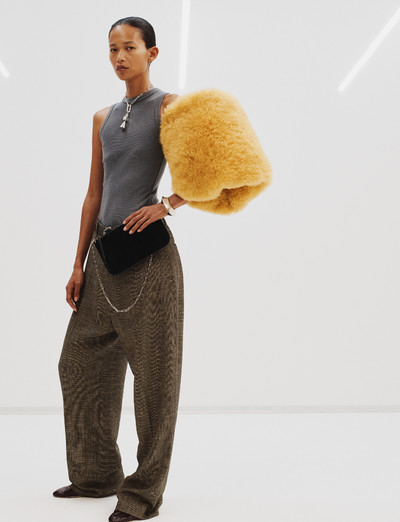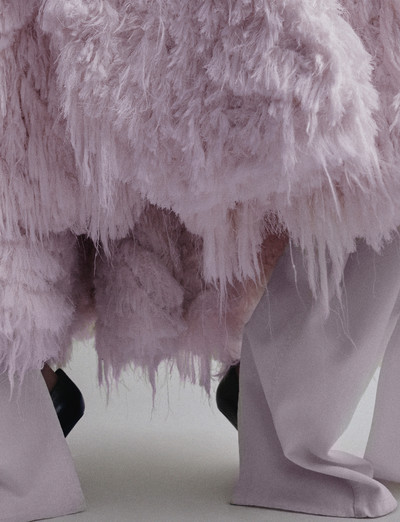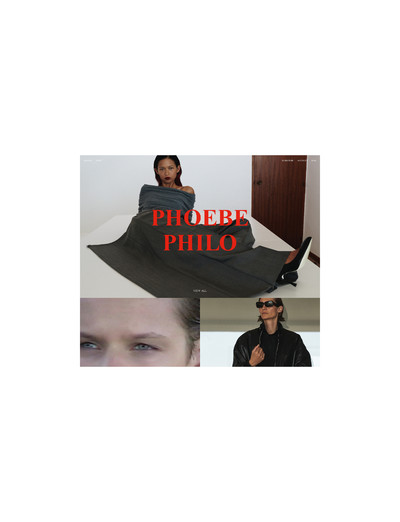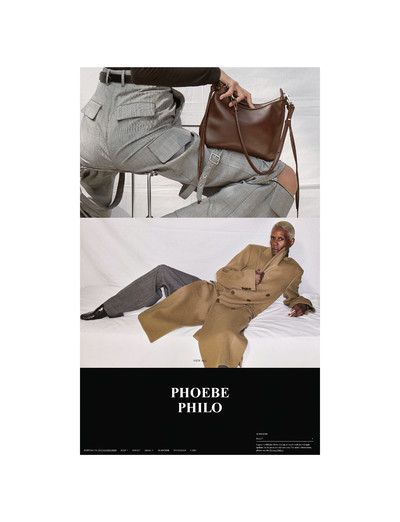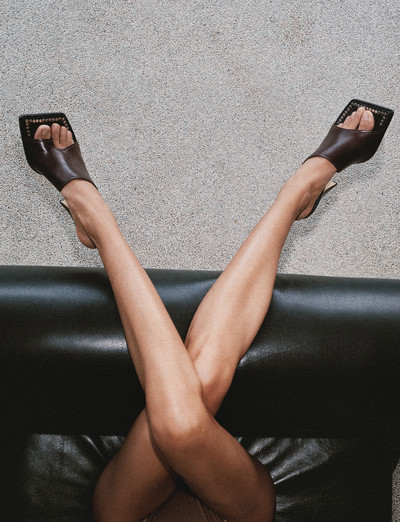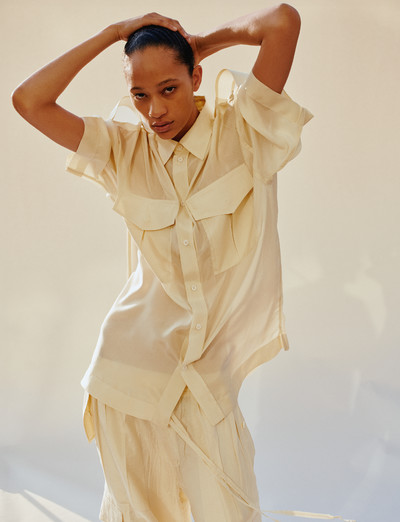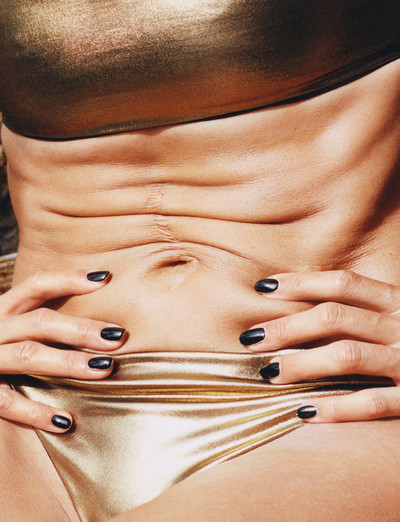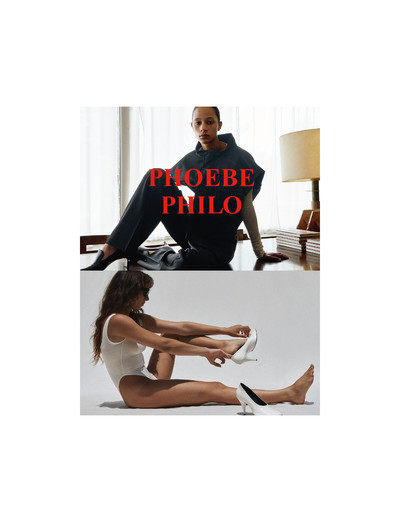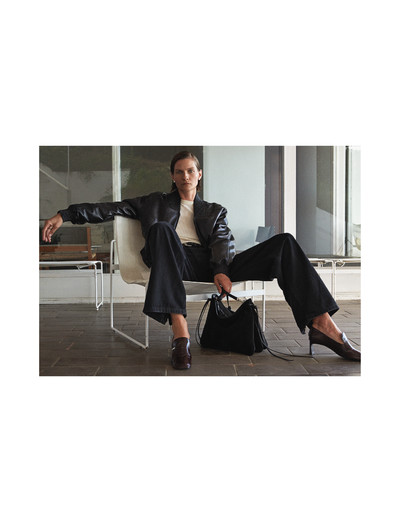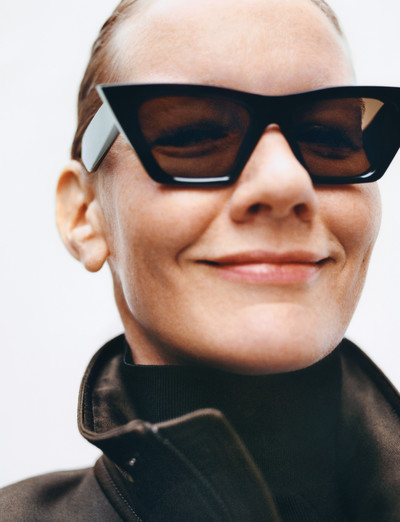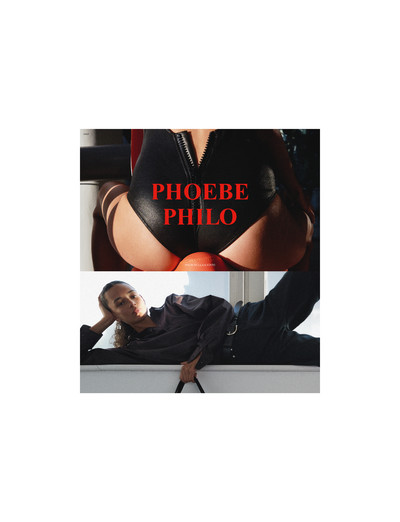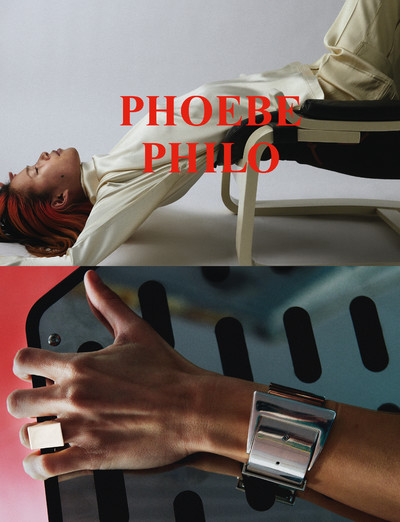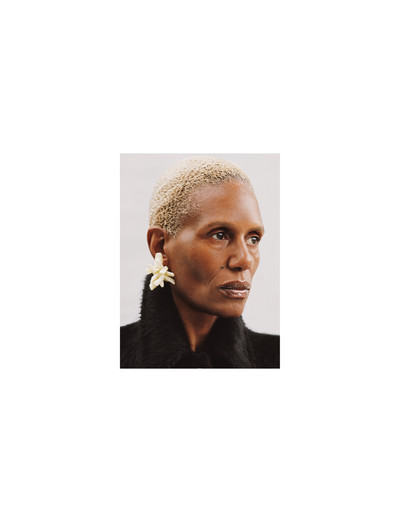Essay by Charlotte Cotton
With the intentional sidestepping of the spectacular world-building of fashion week runway shows, photography is the primary toolkit for Phoebe Philo’s visual language.
‘I write entirely to find out what I’m thinking, what I’m looking at, what I see and what it means.’
– Joan Didion, 2012
The October 2023 launch of Phoebe Philo’s eponymous brand was pitched at an elegant pace and in a minor key, both serious and sotto voce, with intentionally unhurried, wardrobe-sized edits. From the outset, the concise visual and textual dialects of the house have read as counterpoints to the often overstretched messaging of the ready-to-wear fashion system. There was no runway spectacle, no red carpet gowns, no flagship store opening, no pre-Fall or resort collections, no operatic language or memetic trending. The astute, episodic delivery began to appear on social media platforms and in the house’s email newsletter to whom over 100,000 people had subscribed by the time of the release of Collection A’s first edit.
Philo’s prior client base and a wider, self-elected audience of ‘Philophiles’ were waiting in readiness to once again heed her inimitable and pre-possessed approach to the language of women’s fashion. This is the third public phase of Philo’s creative life to date, with her first creative director role at Chloé from 2001 to 2006. Her design approach at Céline (2008-2017) is, of course, fashion lore, signalling a new vocabulary that provided a prescient lexicon for a timely overhaul of fashion narratives. Philo’s design language is pragmatic, sensual and architectural, and can manifest as breathtakingly specific distillations of the present moment. She has always created entry points for direct connections to fashion, the kind that fire up our mirror neurons and show fashion to be a true modality with a durable function as social armour for our agency and autonomy.
From the outset, the Phoebe Philo house has articulated an intention to hold itself to a standard of fundamental sustainability in the post-pandemic environment where there is a collective longing for a clear cultural compass in a messy and mercurial climate. With its added advantage of being a new entity that is unfettered by having to mitigate against past mistakes, the challenge for the Phoebe Philo label is to continue what it has started and play no deliberate part in the structural attrition by design within the present day R-O-I-meets-zero-sum-game of the fashion business. Philo’s ‘permanent pieces’ of clothing, leather goods and accessories are made with lasting materials and mindful supply chains, crafted for sale in batches that were initially only sold via its bespoke direct-to-consumer e-commerce platform. This approach of concisely saying only what you are doing in reality, in our current state of affairs, is an earnestly winning paradigm for creative sustainability.
The first sentence of the Phoebe Philo launch communication in Autumn 2023 describes the staggered deliveries of its collections (a restrained total of two per year) as a proposal for a ‘continuous body of work.’ Attendant to this frame of reference is the emphasis it gives to Philo’s creative direction as a process of expression and making, deliberately codified as a sustained creative practice. This strikingly precise language speaks to a cultural context that is broader than the fashion system, and significantly more ubiquitous in the arena of contemporary art. It is a knowing but certainly not presumptuous choice of phrase for collections that are purposefully made and intended to be worn for their material duration, born from a creative practice that is an ongoing process of combining constancy and evolution. Akin to pieces in a body of authored works by an artist that leave the private space of the studio for public showing, Phoebe Philo collection pieces from the past two years are presented in well-curated deliveries and immediately recognised for their point of view and resonance beyond a conventional fashion season. They are cultural forms that will no doubt become collectible, and rare objects that circulate on the secondary market titled with gorgeous, haiku-like names including Gig Bag, Zip Polo, Peak Sunglasses, Wave Trousers, Parachute Skirt and Buckle Cuff.
The ‘voice’ of the Phoebe Philo house has a recognisably particular restraint. Words are used purposefully and sparingly, clarifying but not embellishing the body of work. There are no behind-the-scenes anecdotes or origin stories, and Philo remains resolutely cipher-like. Like many of the best original thinkers and creators, Philo doesn’t let her biography get in the way, and our reading of her body of work is orchestrated to quickly get us to the vantage point of our own interpretations. These semantic conditions place photography and moving image in a compelling and vital position within the creative processes of the Phoebe Philo studio. With the intentional sidestepping of the spectacular world-building of fashion week runway shows, and without a route map (beyond well-placed editorial projects) of what cultural collaborations may become in the orbit of this fashion house, photography is the primary toolkit for its visual language.
Philo’s creative direction is a thoughtful, exquisite economy of means and extends into being curator, stylist and editor of all of her collaborations with image-makers for the Phoebe Philo label. There is an essentialist and mediumistic understanding of photography that stations it as a working tool expressively folded into Philo’s continuous design process. Photography is not separated as an ancillary action to be picked up and put down with little material impact on the making processes of the Phoebe Philo design studio and is instead integral, regardless of who clicks the shutter. Photography here is more of a default instrument for articulation than a fetishistic, virtuoso material that runs the risk of adding an obfuscating layer of interpretation to her body of work. Like writing, photography is a language form with a process through which to focus and discover, and a means to observe and take account of the thought process behind a body of work.
‘Seemingly effortless and uncomplicated images of her chosen ensemble cast are the aperture through which we encounter the Phoebe Philo world.’
Philo is deeply knowledgeable of the continually shifting relationships between fashion, art and image-making of the past 35 years and this no doubt informs her visual strategy. She has been a close observer of the rise of photography to become an uncontested contemporary art form and the artist-led blending of the traditional industrial boundaries between so-called ‘fine art’ and ‘commercial photography’. Philo seems especially sensitive to the enduring idea – even in a digital image environment – of photography as a sequence of active choices that form the consequential steps in a dynamic process of rendering an image. If there is a throughline in Philo’s incitement of photography, it is her as a cultural producer who truly understands that photography is an alchemic combination of preconception and observation.
Since launching her self-titled label, Philo has invited long-standing collaborators Talia Chetrit and Tyrone Lebon, as well as foremost fashion portraitists Sam Rock and Alasdair McLellan to think through with her these formative visualising steps. They are like-minded in their appreciation of what can happen in the intensely concentrated moment on a shoot, when all eyes are focused on what is unfolding in front and around the camera, and the reward of paying attention to the happenstance of reality that is beyond what has already been planned and rehearsed. Everything within Philo’s very particular fashion imagery has to be fully believable as the fixing of a fleeting moment into perpetuity, and held in every facet from casting to styling, hair and make-up to mise-en-scène, and from a subject’s gesture to the light at times of day and the distinctiveness of a chosen vantage point. There is more than one way to interpret the degree of attention that Philo gives to every stage in the image-making process, not least that each step and decision sets a new precedent and has consequences for the evolving Phoebe Philo body of work. Perhaps the most compelling reasoning for this meticulous visual strategy is that these seemingly effortless and uncomplicated images of her chosen ensemble cast are the aperture through which we encounter the Phoebe Philo world. Rather than the plot lines of cinematic storytelling, we are given narrative vignettes of unforgettable photographic encounters with these extraordinary characters embodied by long-time collaborators including Daria Werbowy, Binx Walton, Selena Forrest and Karolin Wolter, as well as a constellation of subjects chosen with the support of casting director Julia Lange. Older models such as Amanda Parker, younger talent including Noor Khan, Sun Mizrahi and Karmay Ngai, old-school street cast archetypes, and the wild card inclusion of German actor Sandra Hüller – whose presence adds a fascinating combination of ambiguity and certainty – make for a resounding chorus of profound individuality.
Philo draws up from a personal well of instincts and experiences and draws down from the contextualising ether of our real-time collective consciousness to direct her versions of womanhood. There is something staggering about the agency, pre-possession and rightful self-love that manifests in these performances for the camera – akin to the groundbreaking resonance of Martin Munkácsi’s vital and realistic representations of women in fashion photographs in the 1930s – because they are still the exception to the rule of the tired general conventions of character construction in fashion imagery. Philo’s alter egos and wondrous femme characters inhabit her body of work, styled for adventure and self-determined experiences. At times, the frame of reference for these campaigns looks and seems almost literary, like the searing specificity of a poem by Philip Larkin. ‘That vase’ from Home is so Sad (1964) becomes ‘That bag’, propped on the seat of a stool by the woman who has walked out of the frame. There is also an acute sense of being present in the moment, like standing close to someone and noticing how the light hits the top of their glasses frames. There is a tenderness in this photographic capturing of an unrepeatable moment in time and place. In other pictures, where shoes are the principal fashion subject, the camera looks down and is so close that it could almost be the woman wearing the shoes who is taking the photograph. We get to experience the play and joy of ‘The new pair of red shoes’ from a first-person perspective. We are the observer and the observed.
